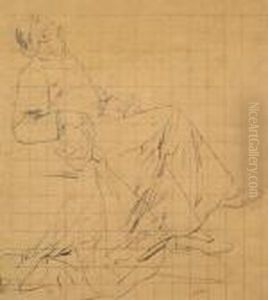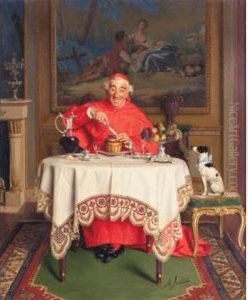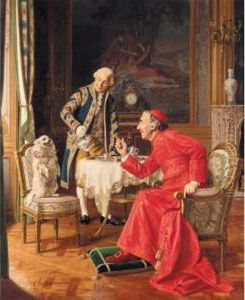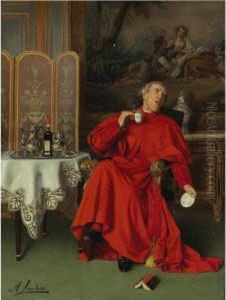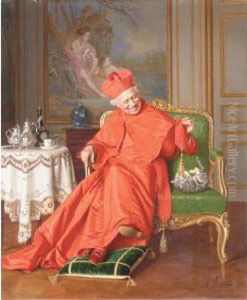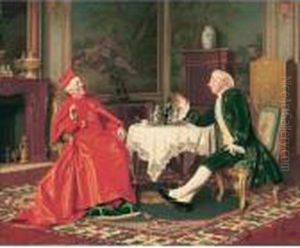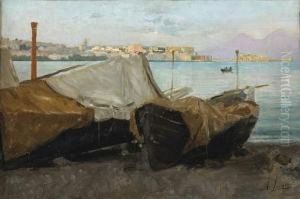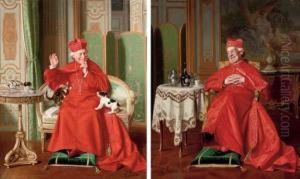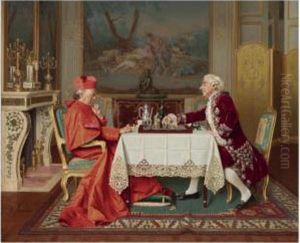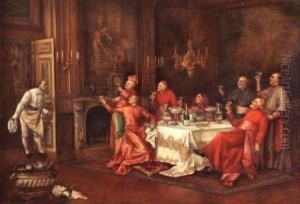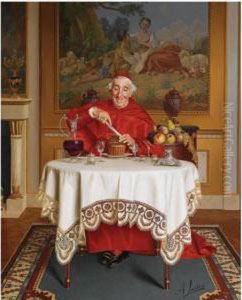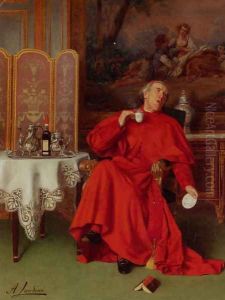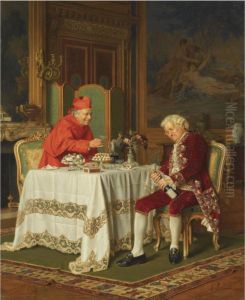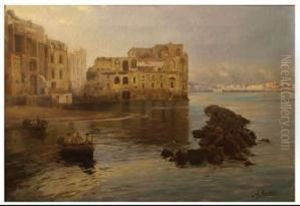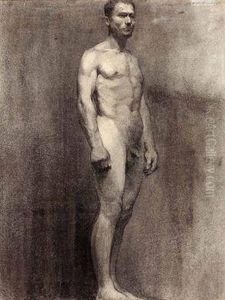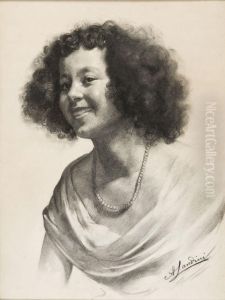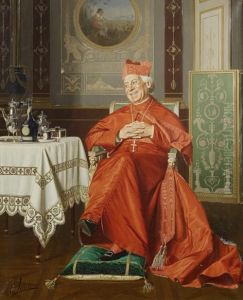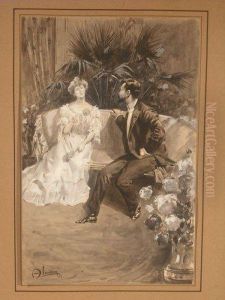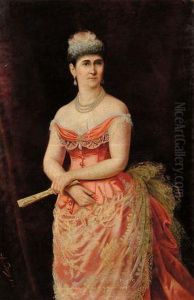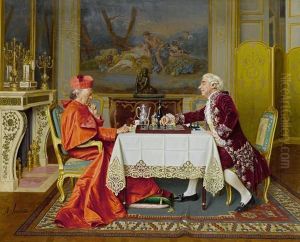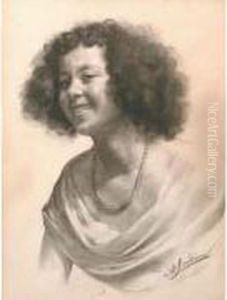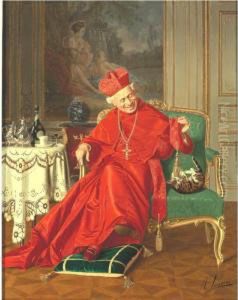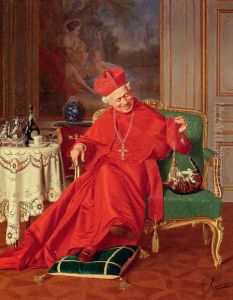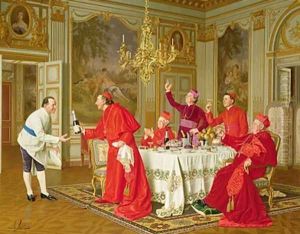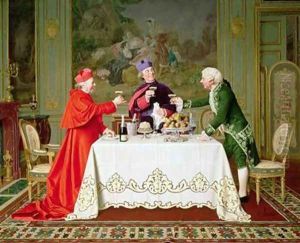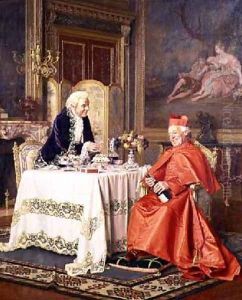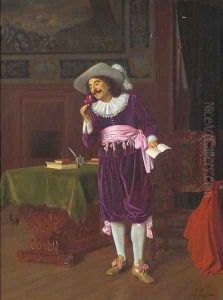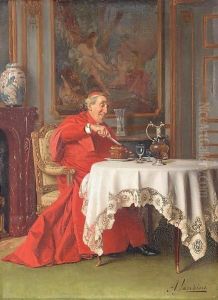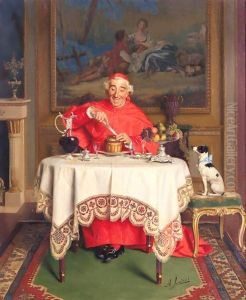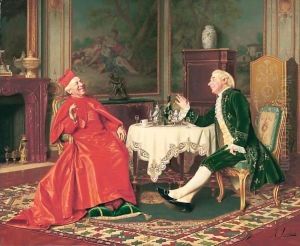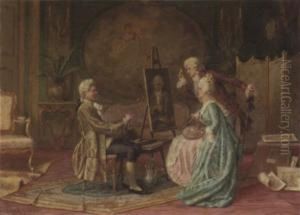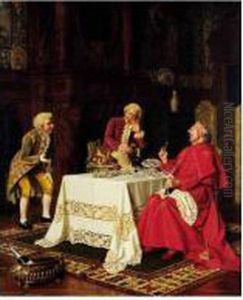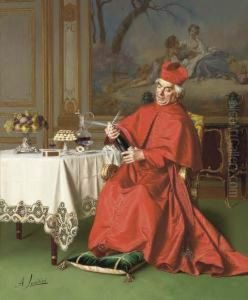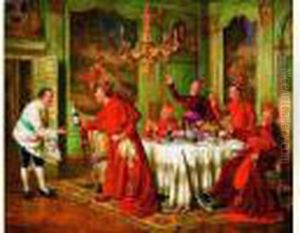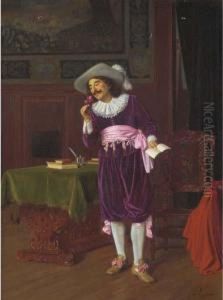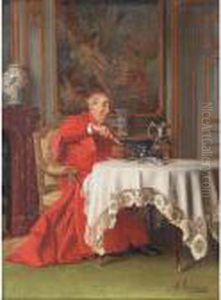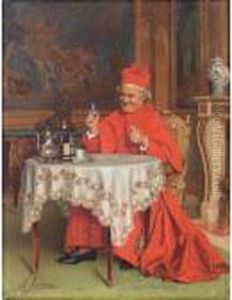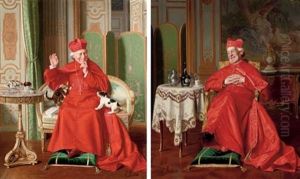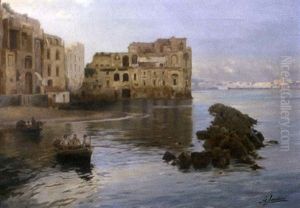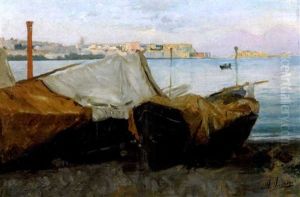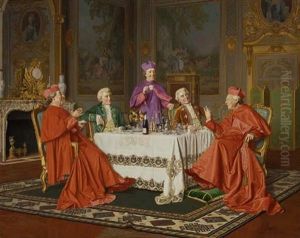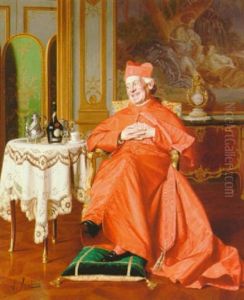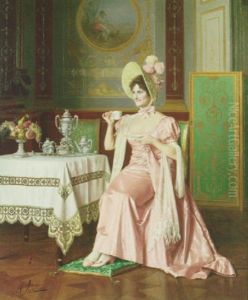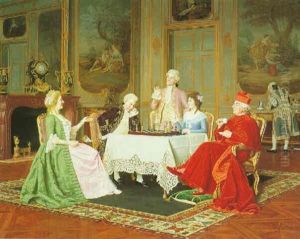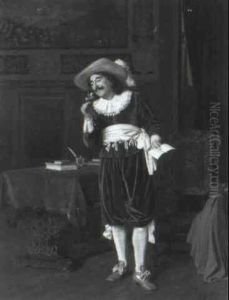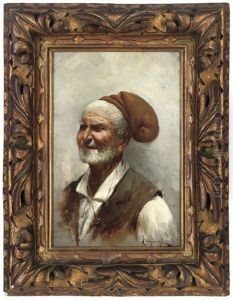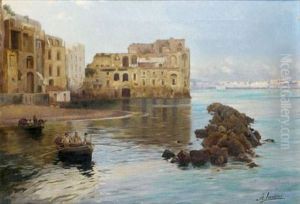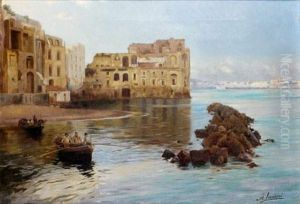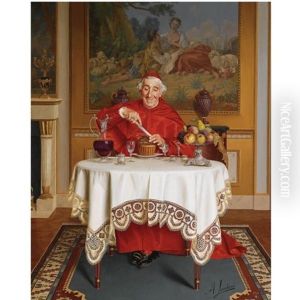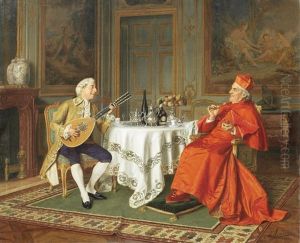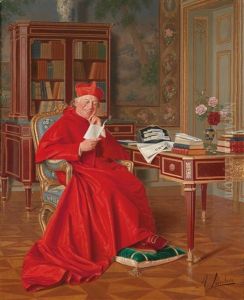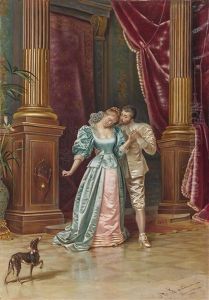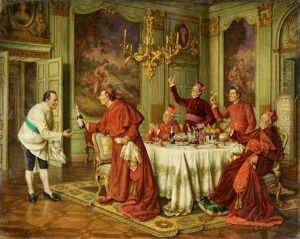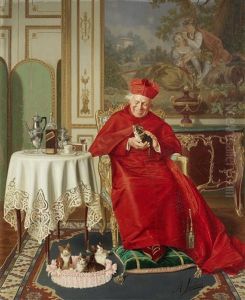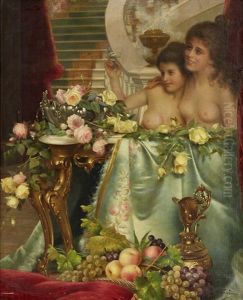Andrea Landini Paintings
Andrea Landini was an Italian painter born in Florence in 1847. He is known for his genre paintings, particularly those depicting scenes from the 18th century with an emphasis on the elegance and refinement of that period. Landini was influenced by the Rococo style, which is evident in his use of light colors, decorative details, and a certain light-heartedness in the subjects he chose to paint.
Landini received his artistic training at the Accademia di Belle Arti in Florence, where he was influenced by the works of the old masters. Despite the strong influence of Renaissance and Baroque traditions in Florence, Landini gravitated towards the Rococo style, which was less prevalent in Italian art of the time. He enjoyed portraying the fashions, interiors, and social amusements of the 18th century, often depicting elegant figures in luxurious surroundings. His works are characterized by their meticulous detail, vibrant colors, and the glossy finish of the surfaces he painted.
Throughout his career, Landini exhibited his works in various Italian cities and gained a reputation for his charming and nostalgic representation of a bygone era. He was particularly appreciated for his ability to recreate the textures of fabrics and the sparkle of light on glass and metal surfaces. This attention to detail made his paintings highly prized by collectors who were captivated by the romantic and escapist qualities of his scenes.
Andrea Landini's work was part of the art movements known as 'costumbrismo' and 'genre painting,' which focused on the daily life and customs of the past. Despite the popularity of these genres in the 19th century, they were often considered less prestigious than historical or mythological subjects. Nevertheless, Landini's skill in this area ensured that his paintings were sought after by those who had a fascination with the elegance and leisure of the 18th century.
Landini continued to paint until his later years, and he passed away in 1935. His paintings remain a testament to his skill at capturing the grace and charm of an era that was already nostalgic in his own time. Today, his works can be found in private collections and occasionally in auction houses, where they continue to be appreciated for their technical excellence and their evocative portrayal of the past.
